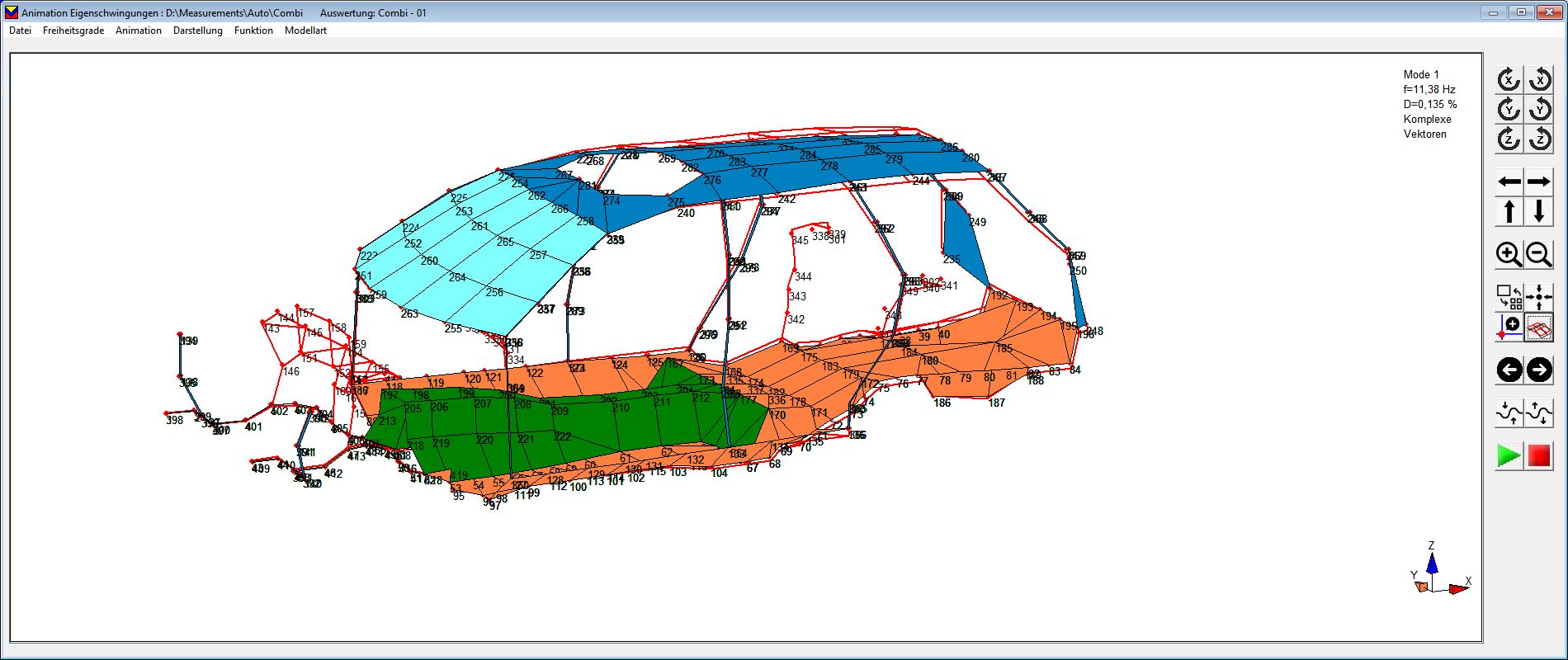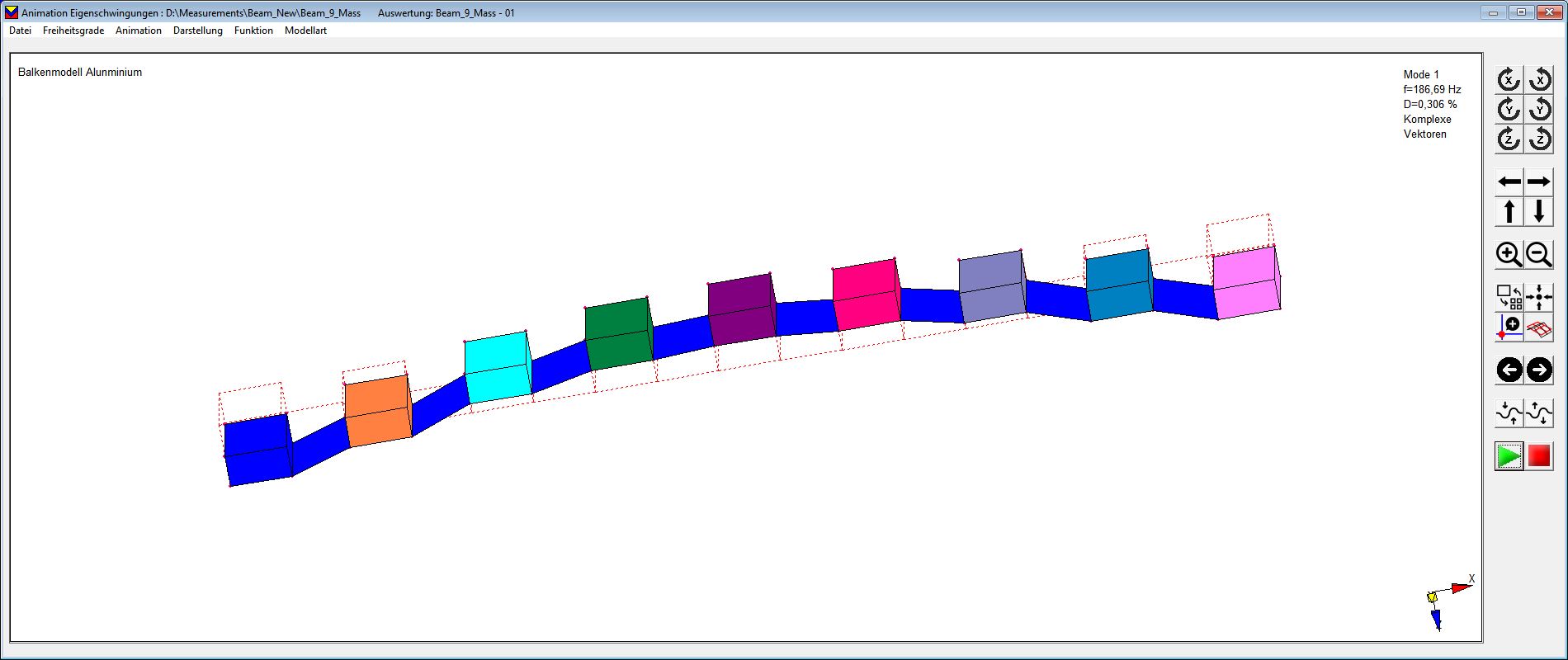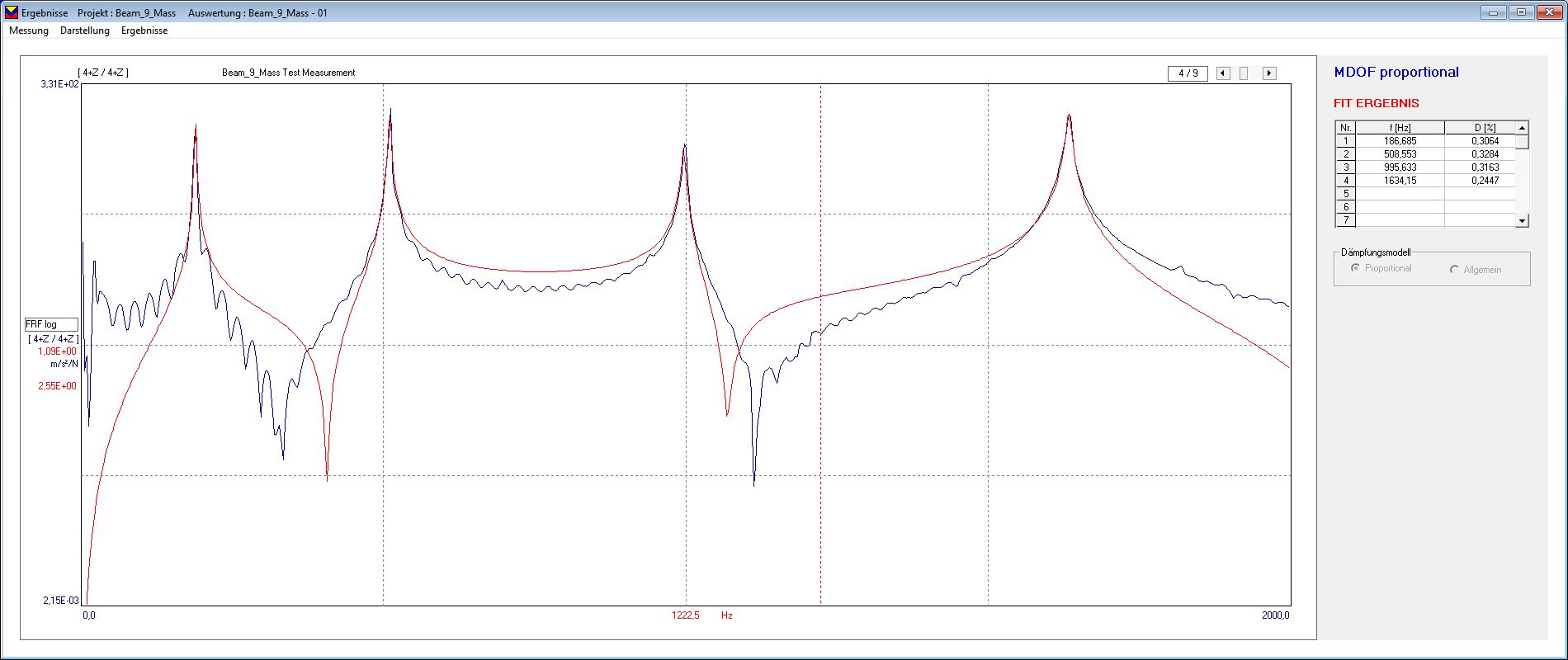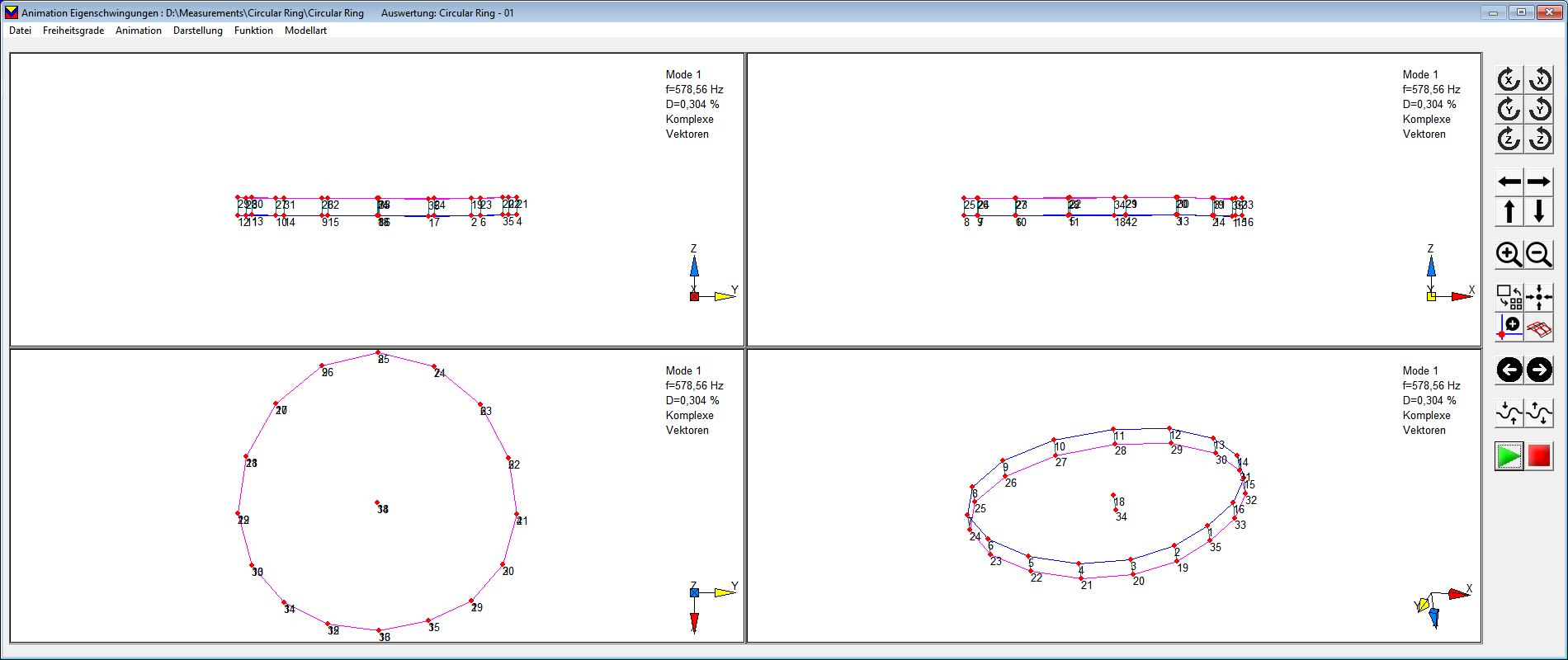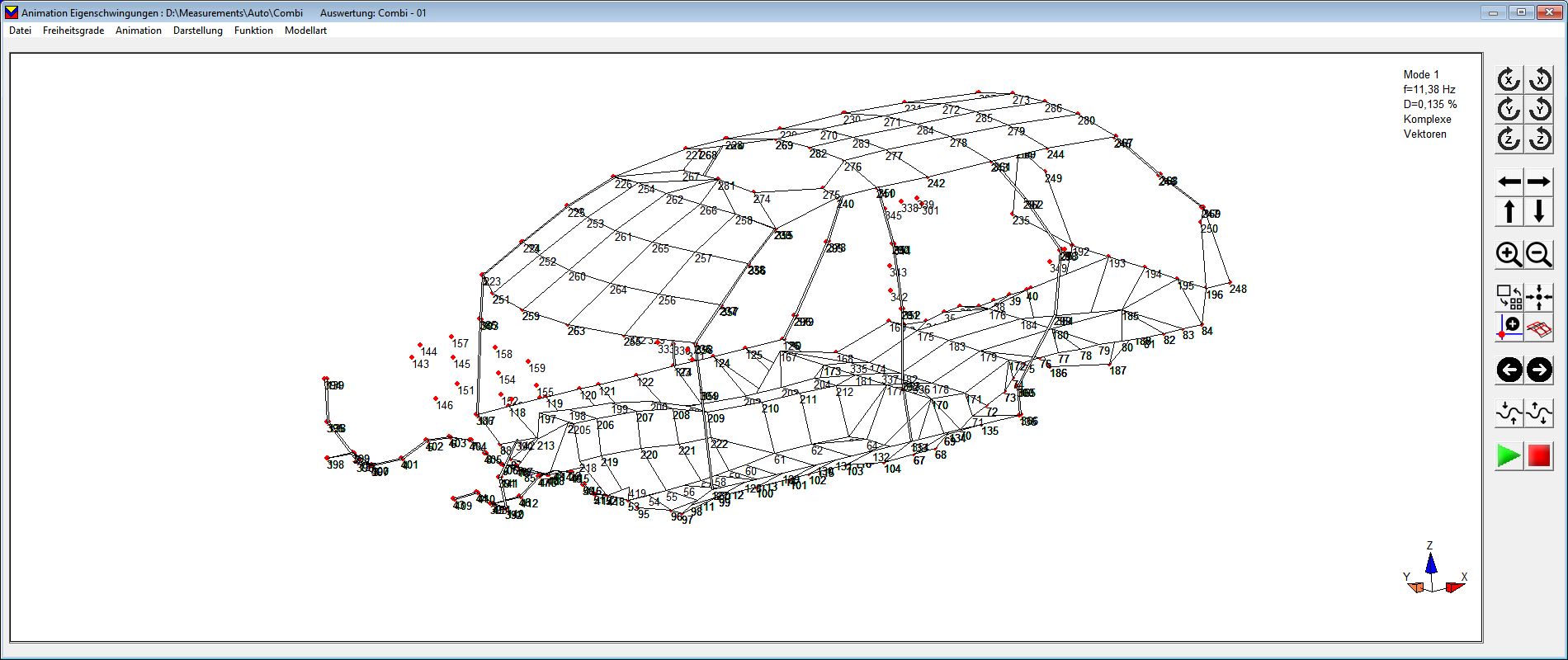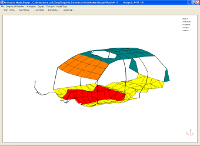Modal Analysis | vModal
The Modal Analysis is a very powerful tool for the determination of the dynamic behaviours of a mechanical structure. With the new vibration measurement technology it is possible to make all measurement within a reasonable time frame. If a modal hammer or a shaker is used for the excitation is dependent from the size and the nature of the test object. The analysis of the measurement data can be done without the measurement system in the office.
Applications & Integrations
Research and Development
Machine diagnostics
Model updating
Structural dynamics
Determination of resonances
Eigenvalue identification
Operating deflection shapes
Structural modification
Sensitivity analysis
Advantages & Innovation
Easy handling
Fast calculation
Extensive curve fitting
Handfit
Animated deflection shapes
MAC function
Cost free viewer
Structure Analysis
The multichannel FFT analyser is integrated in the VL modal system. It is also a stand alone analyser. The analyser uses PC boards, providing 2 to 32 channels. It is a complete noise and vibration measurement system. Up to 4 Channels a USB-Box solution is available.
Structure Analysis
The multichannel FFT analyser is integrated in the VL modal system. It is also a stand alone analyser. The analyser uses PC boards, providing 2 to 32 channels. It is a complete noise and vibration measurement system. Up to 4 Channels a USB-Box solution is available.
UFF Import
Data from external DAQ systems can be imported as file in the UFF format.
External Analysis
Via IEEE interface a data import from several external analysers, such as B&K, HP or ONO-SOKKI, is possible. For the Transfer we use the USB / IEEE interface from National Instruments.
Measurement data
Every measurement will be transferred via the measurement interface to the database. From there they may be recalled for any displaying and editing. Further the measurement interface includes the routines for modal extractions of multi-shaker measurements.
Modal analysis
To determine the eigenvalues functions are available as listed below:
SDOF local, global
MDOF, local, global
Hand-fit
Mode-indicator function
Poly reference
Synthetic frequency response functions
Fit quality function
MAC function
Simulation
Using the results of the modal analysis, eigenvalues and vectors, the engineer will be able to create a mathematical model, suitable for any calculation concerning sensitivity and optimization. A feature to carry out forced response calculations is also integrated. Any verification of the FEM calculation is possible with a special import module for FEM eigenvectors.
Operating Deflections
Stationary operating deflections can be measured in the frequency or time domain. For transient deflections, measurements in the time domain can be done.
Animation
All results may be displayed as animated shapes. There are wire frame and hidden lines models that enable the user to display the results of the operating deflection measurements, the modal analysis or the calculated forced response vibrations.
Show modul
Results can be passed on with the free copyable show modul. The receiver can see and print the measurement data as well as the animated deflection shapes.


